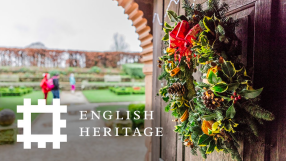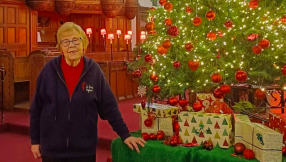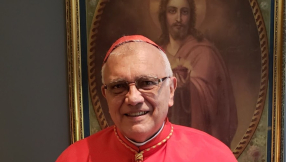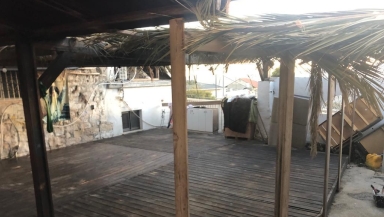
Jewish academic and Hebrew scholar Irene Lancaster reflects on the significance of the Jewish festival of Sukkot.
Straight after Yom Kippur, the Jewish community begins to build their sukkot, the huts in which we live for the seven days of the Sukkot festival (eight days in the diaspora).
Sukkot, otherwise known as Tabernacles, brings to a close the period of the High Holy Days, starting with Rosh Hashana (Jewish New Year) and culminating in Simchat Torah (Joy of the Torah).
Sukkot has been celebrated in the most unusual places, and I would like to use some of these as an illustration.
One of the most imaginative partnerships in this enterprise is this year's collaboration between the former UK Ambassador to Israel, and South Hampstead synagogue.
The former UK Ambassador to Israel was also the first to be both modern and open in his approach to the only Jewish State. His present use of transferable skills in teaming up with an Orthodox synagogue in London to enhance the beauty and attraction of London Zoo is a feat in its own right, and the many visitors to the Sukkah will no doubt be astonished at the value of such a construction during this time of year.
But many centuries ago, in around 134 CE, to be exact, Bar Kokhba, in the midst of a Jewish uprising against the Romans, wrote to a district commander requesting the immediate delivery of the 'four species' to supply his troops for the upcoming Sukkot festival:
"I have sent you two donkeys and you must send with them two men to Jonatan ... in order that they pack and send to the camp, towards you, lulavim (palm branches) and etrogs (a type of citron fruit). And you, from your location, send other people who will bring you hadassim (myrtles) and aravot (willows). See that they are tithed and sent to the camp. The request is made because the army is big. Be well."
To this day, these four species, the lulav, etrog, hadass and aravah, are used in the Sukkot service around the world, and shaken each day of the festival. They represent four kinds of people who make up the Jewish community. For some, they also represent the four characteristics making up each individual.
The festival of Sukkot itself is mentioned in Exodus 23, Leviticus 23, Numbers 29, Deuteronomy 16, Ezekiel 45, Lamentations 2, Ezra 3 and Nehemiah 8-9. And it is these biblical references which have influenced authors as different as UK Prime Minister, Benjamin Disraeli; great American author Herman Melville, Chief Rabbi of Israel under the Mandate, Rav Kook; and Chief Rabbi Shear Yashuv Cohen of Haifa.
In his novel Tancred (1847) Benjamin Disraeli writes as follows about a very depressed Land of Israel under the Turkish Ottoman Empire:
"The vineyards of Israel have ceased to exist, but the eternal law enjoins the children of Israel still to celebrate the vintage. A race that persists in celebrating their vintage, although they have no fruits to gather, will regain their vineyards. What sublime inexorability in the law! But what indomitable spirit in the people!"
Disraeli, of Jewish origin, was to play a significant role in the creation of the modern UK Conservative Party and was Prime Minister in both 1868 and 1874.
Herman Melville, whose novel Moby Dick (1851), is regarded by many as the greatest American novel, appears to be aware of the Talmudic connection between the sukkah construction and the Leviathan, or 'great whale.'
In Talmud Baba Batra 75a, it states:
'In the future, the Holy One, Blessed be He, will prepare a sukkah for the righteous from the skin of the Leviathan (great whale).'
In Moby Dick, the great whale is compared to the altar and others have interpreted the whale itself as being a metaphor for the Jewish Torah. Melville had, after all, visited Israel itself in 1857 and been completely awestruck by the land itself, which, desolate in those days though it was, had produced the 'terrific' religion of Judaism.
One of the most poignant mentions of the Sukkah built in almost impossible circumstances is in a description of his time in a POW Camp in Jordan by Chief Rabbi Shear Yashuv Cohen of Haifa (1927-2016). At this time Shear Yashuv was one of the prisoners, having fought for the Old City of Jerusalem in the 1948 War of Independence, and though aged only 20, and not yet a rabbi, he was put in charge of the camp and asked to act as liaison between the Israeli prisoners from all walks of life and their Jordanian prison guards.
"The Festival of Sukkot was approaching, the Tishrei festival per excellence. But we were extremely worried about how to observe the traditional Sukkot customs according to Jewish law, which many of us held very dear. For the essence of Sukkot is to build a Sukkah and obtain the Arba Minim (4 species mentioned above). But how were we to find these 4 species in the heart of the desert, not to mention construct a Sukkah?
"But then we had a brainstorm. A specially selected group of our young men used to work regularly in the grounds of the British camp commandment, about 7 kilometers away... In the grounds ... stood a number of eucalyptus trees. His wife allowed them to lop off a free branches. As if by magic these 'few branches' grew and grew ... enough to fill an entire truck....
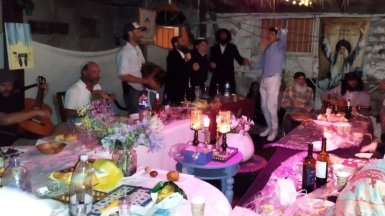
"There was one particularly devout young man from ... Gush Etzion. He insisted on observing the mitzvah of spending the night in the Sukkah... Next to the tent he dug a hole exactly 10 handbreadths deep. Then he took some branches and covered his home-made Sukkah with s'chach (branch covering). Every night he would roll into the Sukkah from his tent and sleep in it, thus observing the mitzvah of 'sleeping in the Sukkah'...
"... The banks of the River Jordan are famous as a source of first class lulavim (palm branches). Aravot (willow branches) we managed to find in the vicinity of the camp. We gave the Arab soldiers money to buy the hadassim (myrtle branches) for us in the local markets. And etrogim (citrus fruit) we received care of the army chaplaincy that was already up and running in Israel – and the joy was great...
"This was only the second time in our history that the children of Israel observed Sukkot in the desert. And, inside the maze upon maze of barbed wire, observed by the Arab guards who surrounded us, we Jews then performed yet another of the holiday commandments by marching in hakafot circles, wrapped in our tallitot (prayer shawls), holding our lulavim and etrogim aloft."
Finally, I would like to cite a poem by Rav Avraham Yitzhak Kook (1865-1935), first Ashkenazi Chief Rabbi of Israel under the British Mandate. These were included in his recent poetry anthology, by Rowan Williams (discussed here: On poetry, translation and religion)
The Light in the Sukkah
On the Yamim Nora'im
The intensity compares
To almost unbearably dazzling light.
Sometimes eyes are narrowed,
Arching at the strain
Of seeking the Divine.
In the shelter of the sukkah,
Fierce rays are filtered;
A softened glow shines steadily within.
And from this gentle light,
Twinkling motes float up
Drifting through the latticed roof.
Rowan comments on this poem: "The celebration reasserts the absolute dependence of the Jewish people on G-d; all that human ingenuity and effort can build is as temporary and fragile as the makeshift structures of their desert wanderings. So for a week, 'all that are native in Israel shall sell in booths' (Leviticus 23:42).
"... So Sukkot is both an easing of the 'strain' of the Days of Awe ... and a sign of the calling to move outwards into the world so that the divine glory can be seen and released within the creation."
A fitting end to a festival heralding the new year of 5784, with the sincere wish that, as the festival itself declares, the whole world will acknowledge and be grateful for all that G-d has done for the entirety of creation as we embark on a new cycle of readings with Bereshit (Genesis 1): 'In the beginning G-d created the heavens and the earth ....'










